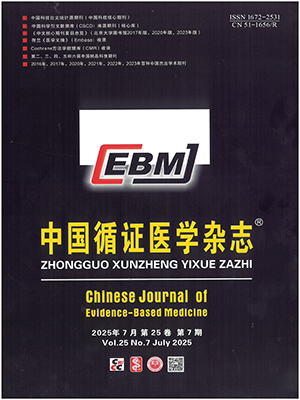Citation: LIUChen, SHENQian, LIXiao-ling, JIANGDe-chun, LIXing-wei, WANGYu-qin. Drug Utilization Analysis of Elderly Inpatients with Cerebral Infarction in Xuanwu Hospital of Capital Medical University in 2011. Chinese Journal of Evidence-Based Medicine, 2015, 15(10): 1132-1136. doi: 10.7507/1672-2531.20150188 Copy
Copyright © the editorial department of Chinese Journal of Evidence-Based Medicine of West China Medical Publisher. All rights reserved




